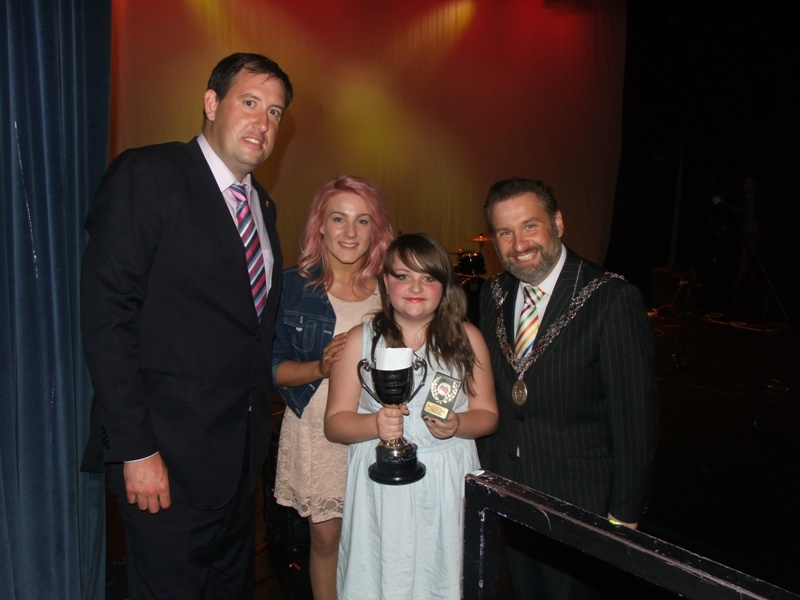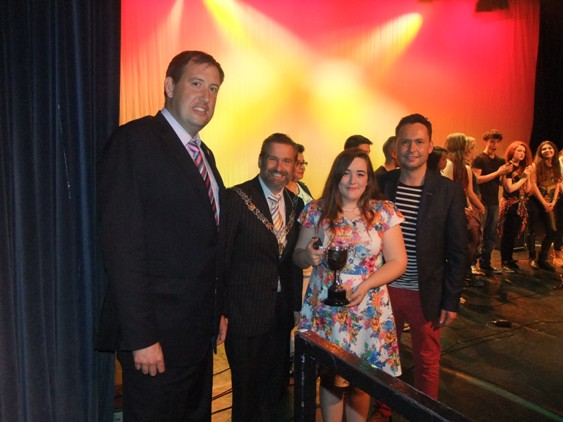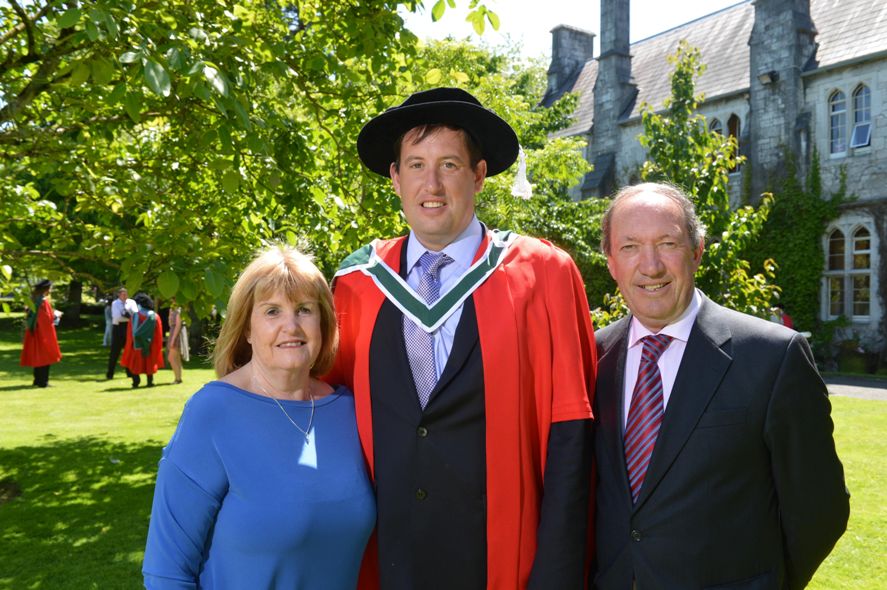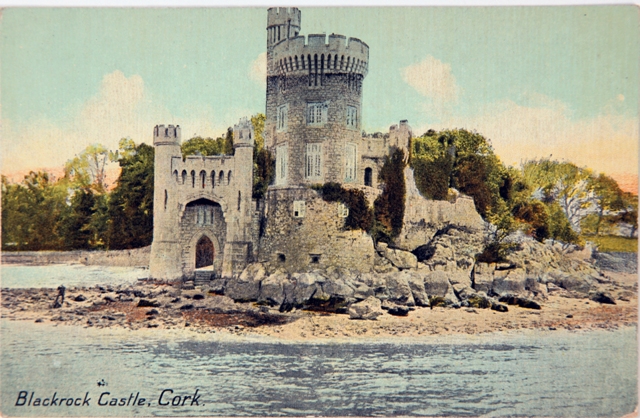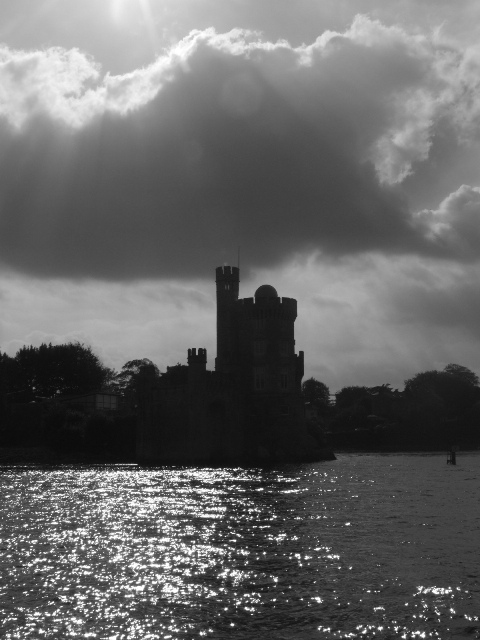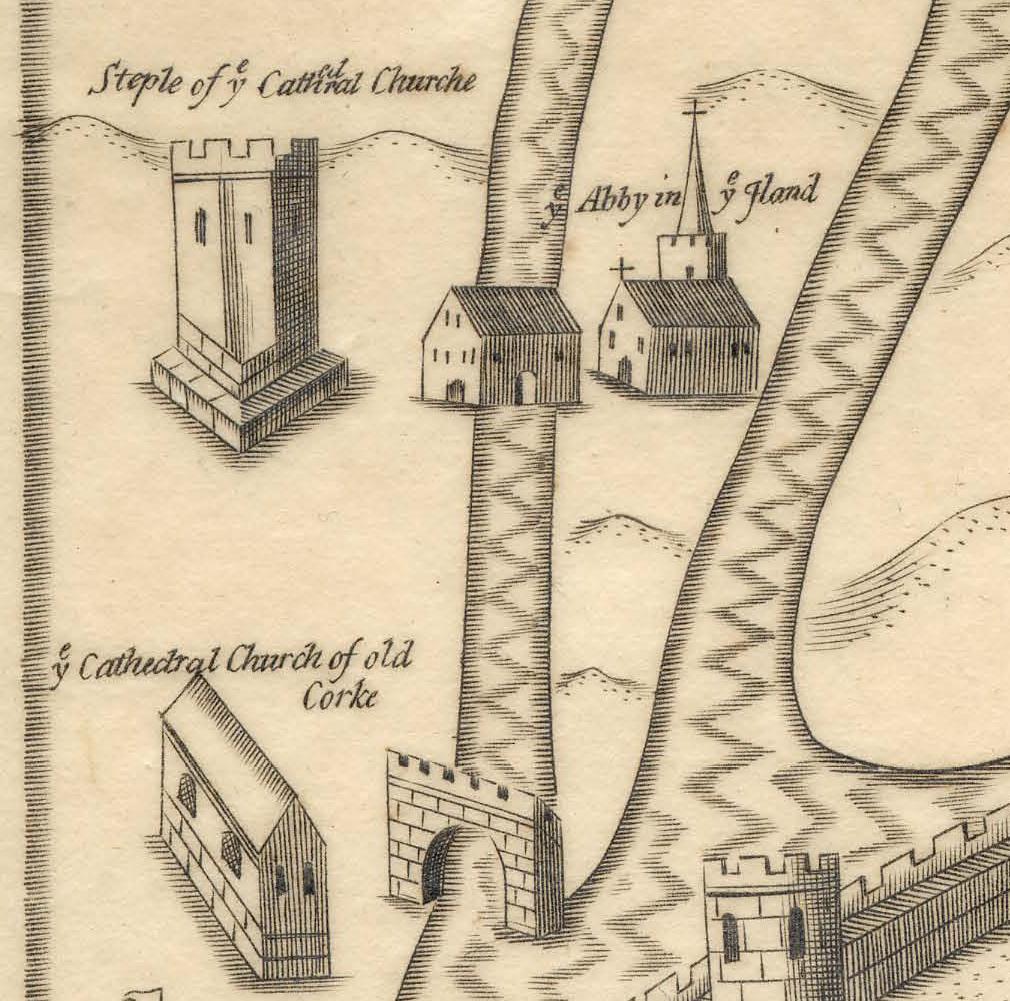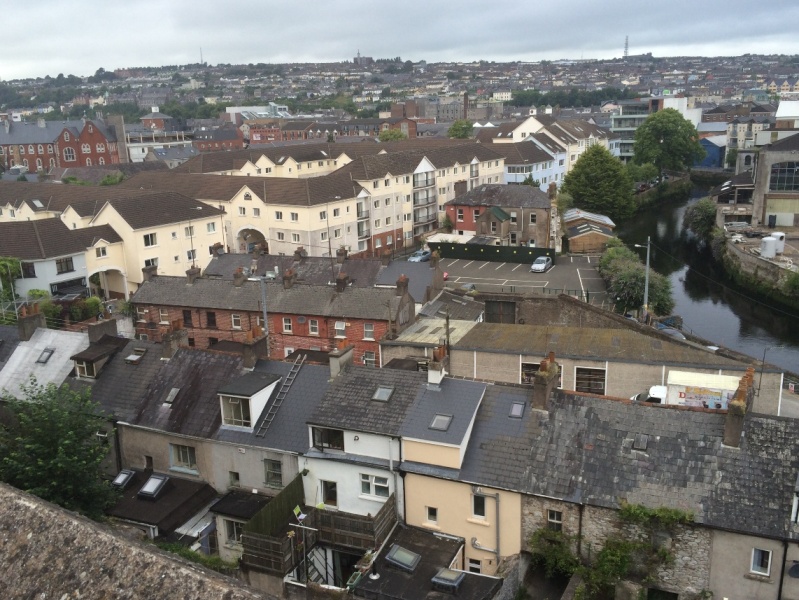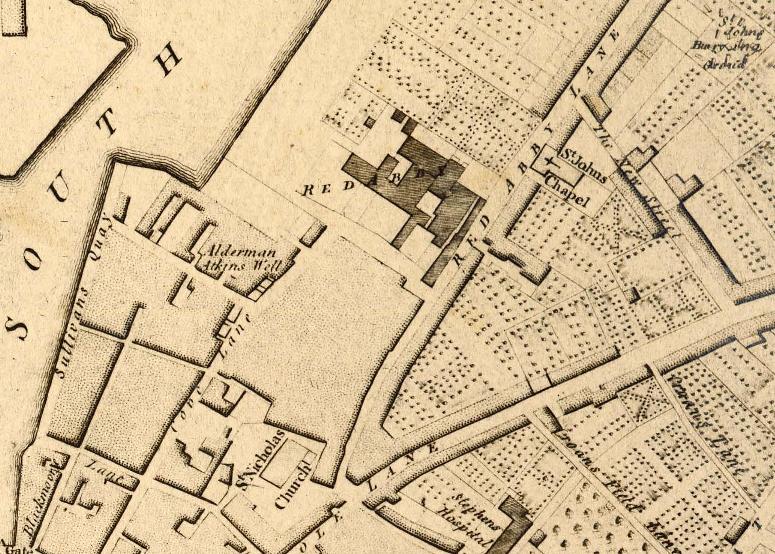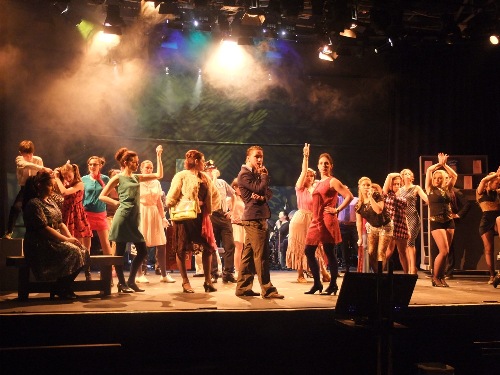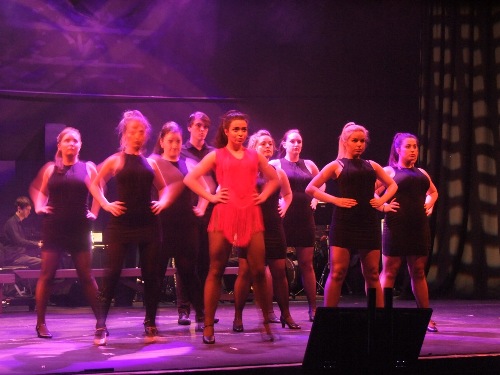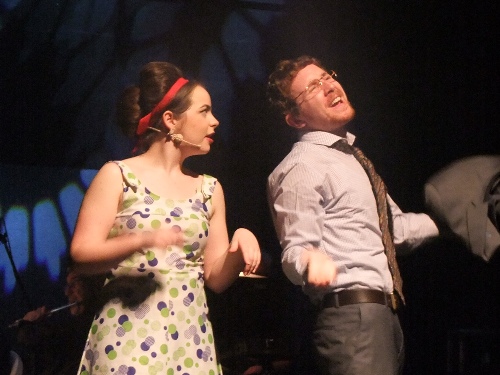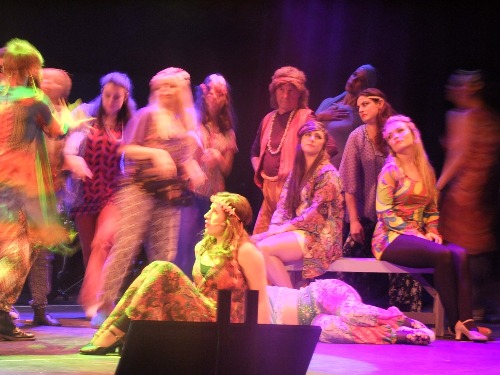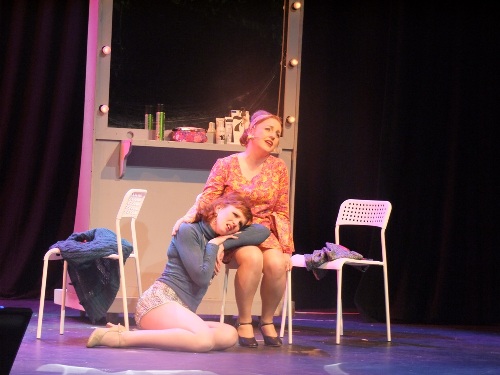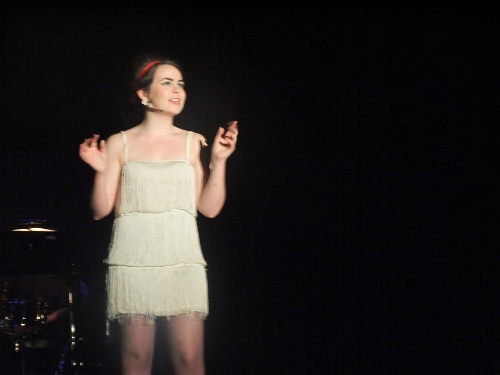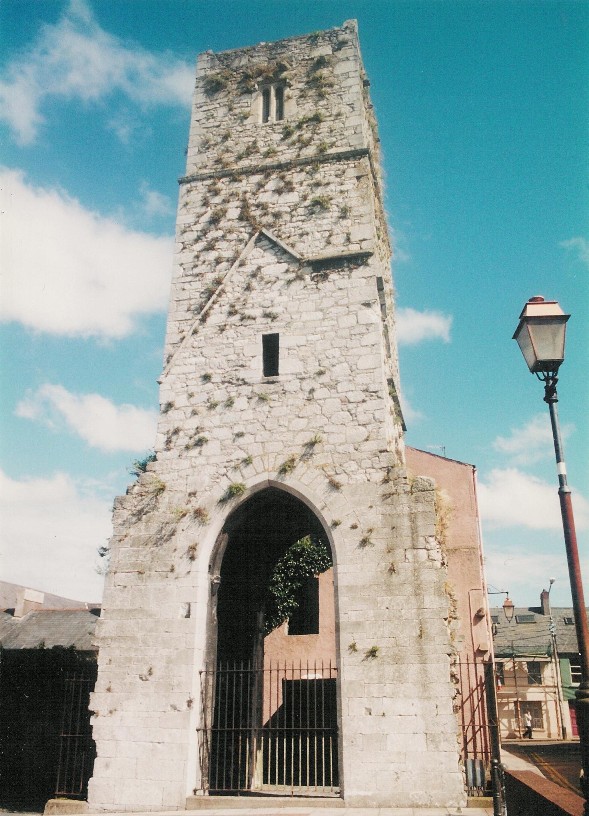The recent McCarthy’s Community Talent Competition at the Firkin Crane! thanks to Yvonne Coughlan, the Producer and all the auditionees, finalists and winners (below)!
Monthly Archives: June 2015
Pictures, McCarthy’s Make a Model Boat Project, June 2015
Kieran McCarthy, PhD in Geography
A River of Memory:
Landscape, Narrative, and Identity in the Lee Valley,
Co. Cork, Ireland
Kieran McCarthy, B.A., M.Phil.
Department of Geography, National University of Ireland, Cork
Thesis submitted to the National University of Ireland for the degree of PhD.
Abstract:
In moments of rapid social changes, as has been witnessed in Ireland in the last decade, the conditions through which people engage with their localities though memory, individually and collectively, remains an important cultural issue with key implications for questions of heritage, preservation and civic identity. In recent decades, cultural geographers have argued that landscape is more than just a view or a static text of something symbolic. The emphasis seems to be on landscape as a dynamic cultural process – an ever-evolving process being constructed and re-constructed. Hence, landscape seems to be a highly complex term that carries many different meanings. Material, form, relationships or actions have different meanings in different settings.
Drawing upon recent and continuing scholarly debates in cultural landscapes and collective memory, this thesis sets out to examine the generation of collective memory and how it is employed as a cultural tool in the production of memory in the landscape. More specifically, the research considers the relationships between landscape and memory, investigating the ways in which places are produced, appropriated, experienced, sensed, acknowledged, imagined, yearned for, appropriated, re-appropriated, contested and identified with. A polyvocal-bricoleur approach aims to get below the surface of a cultural landscape, inject historical research and temporal depth into cultural landscape studies and instil a genuine sense of inclusivity of a wide variety of voices (role of monuments and rituals and voices of people) from the past and present.
The polyvocal-bricoleur approach inspires a mixed method methodology approach to fieldsites through archival research, fieldwork and filmed interviews. Using a mixture of mini-vignettes of place narratives in the River Lee valley in the south of Ireland, the thesis explores a number of questions on the fluid nature of narrative in representing the story and role of the landscape in memory-making. The case studies in the Lee Valley are harnessed to investigate the role of the above questions/ themes/ debates in the act of memory making at sites ranging from an Irish War of Independence memorial to the River Lee’s hydroelectric scheme to the valley’s key religious pilgrimage site.
The thesis investigates the idea that that the process of landscape extends not only across space but also across time – that the concept of historical continuity and the individual and collective human engagement and experience of this continuity are central to the processes of remembering on the landscape. In addition the thesis debates the idea that the production of landscape is conditioned by several social frames of memory – that individuals remember according to several social frames that give emphasis to different aspects of the reality of human experience. The thesis also reflects on how the process of landscape is represented by those who re-produce its narratives in various media.
Kieran’s Our City, Our Town, 25 June 2015, Historical Walking Tours
Kieran’s Our City, Our Town Article,
Cork Independent, 25 June 2015
Summer Historical Walking Tours
Summer is upon us, time to get out about and explore the city. Check out the historical walking tours below I have on over the next week.
Saturday afternoon, 27 June 2015, 12noon, Historical Walking Tour of St Finbarr’s Hospital, Meet at gate, Douglas Road, in association with the Friends of St Finbarr’s, (free, duration: 1 ½ hours).
This is an opportunity to explore the early story of the hospital and its workhouse past as well as some local history of the area. It is also an opportunity to share your own memories and knowledge. The site played a key role in the life of the city from 1841 onwards. During December 1841, a new workhouse opened in the Douglas Road to replace an older structure known as the House of Industry in Blackpool. The workhouses built at that time had a distinctive uniformity in terms of their peripheral location, their regular block like appearance, together with their enclosed plan; once inside families became broken up – men from women, boys from girls. Initially, the Douglas Road complex had 3,000 inmates due mainly to the desperate employment situation. In addition, a large number of non-residents were provided with a breakfast.
Wednesday evening, 1 July 2015, 6.45pm, Historical Walking Tour of Blackrock, Meet at Blackrock Castle (free, duration: 2 hours).
The original Blackrock fort or castle was built in 1582 by the citizens of Cork to safeguard ships against pirates who would come into the harbour and steal away the vessels entering the harbour. In 1604 Charles Blount Lord Deputy of Ireland defended himself against the citizens of Cork who were rebelling against King James I of England. Over a century later in 1722, the old tower was destroyed by fire and a new one built by the citizens. Apart from functioning as a type of lighthouse, Admiralty Courts were held at Blackrock Castle to legislate over the fishing rights of the citizens. Under various charters granted many centuries ago, the Mayor of Cork enjoyed Admiralty jurisdiction to the mouth of Cork harbour. The history of fishing and fishermen in Blackrock at least dates back to the early 1600s and perhaps is regrettably one of the histories unrecorded in Blackrock. In 1911, 64 fisherman ranging in age from 14 to 70 years of age are listed in the census as living in Blackrock village. At least 40 are heads of households and had their own dwellings. Even more interesting was that this community was lodged in a sense in a middle class culture, a series of big houses complete with estate network and management. Indeed, Blackrock had its own pier, bathing houses, boating club, schools, suburban railway line, and Protestant and Catholic churches.
Thursday evening, 2 July 2015, 6.45pm, Historical Walking Tour of Ballintemple, Meet in Ballintemple graveyard, Templehill (free, duration: 2 hours).
Urban legend and writers such as Samuel Lewis in 1837 describe how the Knight’s Templar had a church here, the first parish church of Blackrock: “At the village of Ballintemple, situated on this peninsula, the Knights Templars erected a large and handsome church in 1392, which, after the dissolution of that order, was granted, with its possessions, to Gill abbey. At what period it fell into decay is uncertain; the burial ground is still used”. The graveyard is impressive in its collection of eighteenth century and nineteenth century headstones. It has a series of low uninscribed grave markers in its south east corner. There are also many inscribed headstones with smiling faces with one inscribed with ‘Remember Death’. The graveyard remains an undiscovered corner of the city with much of its family histories unresearched and unpublished.
The earliest references to the Knight’s Templar church are shrouded in myth in Ballintemple. Perhaps all is known a rough date of dissolution. Michael J Carroll’s book “The Knights Templar and Ireland” describes some of their background in Europe and in Ireland. The Knights Templars or The Poor Fellow-Soldiers of Christ and of the Temple of Solomon were one of the most controversial organisations in medieval European history. Formed in the early twelfth century in obscure circumstances they were shrouded in secrecy for their 190 year history. Their initial aim was to break with traditional non violent ethos of religious orders and take up arms to protect the recently captured city of Jerusalem. They also vowed to protect Pilgrims visiting holy sites in the Middle East. They became famous initially due to their military exploits but during the crusades but in thirteenth century they gained more fame and in some cases notoriety for creating a medieval Banking empire.
Friday evening, 3 July 2015, 6.45pm, Historical Walking Tour of Docklands, Meet at Kennedy Park, Victoria Road (free, duration: 2 hours).
Much of the story of Cork’s modern development is represented here. The history of the port, transport, technology, modern architecture, agriculture, sport, the urban edge with the river all provide an exciting cultural debate in teasing out how Cork as a place came into being. The origin of the current Docklands is a product of the late nineteenth century and early twentieth century.
Captions:
797a. Blackrock Castle, c.1900 (source: Cork Museum)
797b. Blackrock Castle, present day (picture: Kieran McCarthy)
Kieran’s Our City, Our Town, 18 June 2015
Kieran’s Our City, Our Town Article,
Cork Independent, 18 June 2015
Cork Harbour Memories (Part 27)
Stories from St Mary’s of the Isle Abbey
Carew’s Map of Cork, c.1600 shows the Dominican Abbey on a marshy island to the south-west of the walled town. The map illustrates a church with a large steeple with an adjacent water mill built next to the river. The name of the island was Sancta Maria de Insula or St. Marie’s of the Isle, the area of present day Crosses Green. This marshy island like the islands on which the adjacent walled town was built on, would have been subject to constant flooding at high tide. Therefore it can be assumed that when the abbey was being built, the unfavourable local ground conditions would have been taken into account.
An insightful book by Tomas Flynn (1993) entitled The Irish Dominicans, 1536-1641 reveals that in 1216, the Dominican order received papal approval. Due to its universal teaching mandate, it was not long before they established priories in towns and cities in medieval Europe. In addition due to their native French beginnings, it was only natural that the Anglo-Normans in Britain and Ireland became their first patrons. On arrival in Ireland in 1224, the first priories were established at Dublin and Drogheda. In general, initially the Dominicans were viewed as part of the spiritual wing of Norman civilisation and colonisation, but they quickly distanced themselves from that image and became highly favoured and respected by the leading Gaelic families as well.
Within thirty years, the Dominicans had established over ten friaries geographically spread adjacent to urban settlements such as Anglo-Norman Walled Towns. Among these were among the Dominican Abbey at Cork in 1229 under the patronage of Lord Philip de Barry. Antiquarian Charles Gibson in his History of Cork in 1861 details that the abbey reputedly held a bronze equestrian statue of the De Barry, which was kept in the abbey’s church up to the 1540s.
As the Dominicans were establishing themselves in Cork, the Franciscans on the North Mall were doing the same. An unfortunate by-product of Dominican success was rivalry with the Franciscans. This included conflict over theological opinions, the making of foundations, sources of alms and benefactions, and recruits. To attract vocations, both orders claimed closer resemblance to the work of the Twelve Apostles. However, arising out of this came strong ambition to succeed and a lot of self seeking in medieval times. They did though over time after numerous quarrels come to acknowledge mutual respect between their orders.
The early historic references detail the respect that the upper classes in medieval society had for the Dominican order. This is evidenced by a reference in a royal charter in 1317 that tells of free passage for the Mayor of Cork, bailiffs and the Dominican friars into the walled town over South Gate Bridge. The charter goes on to describe that the friars were to be let in for the sake of the good town peoples. Without doubt, the spiritual and educational contributions by the friars would have been invaluable to the quality of urban life within the town. In general, historical works on other Dominican abbeys in Britain and Ireland have shown that the Dominicans helped with social problems such as literacy in a walled town, professional guilds and other devotional organisations.
Royal respect, in the form of money offerings or alms, was also granted to the Dominican Abbey during the late thirteenth century and in the fourteenth century and fifteenth centuries. Regarding the nobility, many of them with religious connections to the abbey are recorded as been buried on the grounds of the property itself. It is recorded in the late fifteenth century that the Dominican Order at Cork was involved in a reform of the Dominican rule of observance or rules of the order. It is stated that some monks elsewhere in Ireland and Britain had strayed from the typical strict observance of the Dominican rules. The new rules of observance came into effect in Cork in 1488.
As with the Franciscan Abbey on the North Mall, the mid 1500s was also a turbulent time in history for the Dominican Abbey. During King Henry VIII’s reign the property of the abbey was confiscated. The list of the physical properties of the abbey give an indication of how large the Dominican order was in Cork. It is recorded that Abbey possessed three small gardens containing two acres, a watermill, a fishing pool, thirteen acres of arable lands and twenty acres of pastural land (in County Cork).
It is also recorded in the medieval period that the monks at the Dominican abbey had two prized relics, the images of St. Dominick and the Blessed Virgin Mary and child. The images of St Dominick were unfortunately publicly burnt due to religious conflict between the Dominicans and the English Garrisons’ orders at the high cross in the walled town on North Main Street in 1578. The blessing Virgin Mary was a small carving in ivory and can be seen today preserved in a silver case now in the possession of the friars at St Mary’s Dominican’s Church, Pope’s Quay.
To be continued…
Captions:
795a. Plan of Dominican abbey with section of walled town of Cork from Map of Cork, late sixteenth century as depicted in Sir George Carew’s Pacata Hibernia, or History of The Wars in Ireland (1633), vol. 2, opp page 137.
797b. Crosses Green, former site of Dominican abbey (picture: Kieran McCarthy)
Kieran’s Upcoming Historical Walking Tours, 27 June-3 July 2015
Saturday afternoon, 27 June 2015, 12noon, Historical Walking Tour of St Finbarr’s Hospital, Meet at gate, Douglas Road, in association with the Friends of St Finbarr’s, (free, duration: 1 ½ hours).
Wednesday evening, 1 July 2015, 6.45pm, Historical Walking Tour of Blackrock, Meet at Blackrock Castle (free, duration: 2 hours).
Thursday evening, 2 July 2015, 6.45pm, Historical Walking Tour of Ballintemple, Meet in Ballintemple graveyard, Templehill (free, duration: 2 hours).
Friday evening, 3 July 2015, 6.45pm, Historical Walking Tour of Docklands, Meet at Kennedy Park, Victoria Road (free, duration: 2 hours).
Farewell to Lord Mayor, Cllr Shields, AGM, Cork City Council
Comments by Cllr Kieran McCarthy
12 June 2015
Forever Summer
Lord Mayor, can I add to the congratulations on a successful year and to your focus on building community capacity and topics such as equality and social inclusion.
I met you last week on The Marina, opening the new slip of the Lee Rowing Club.
We are blessed to live in a very beautiful city, especially now as the new leaves are appearing on our trees.
I am always impressed by the city’s blossom trees and As each summer rolls around, those trees in places such as the gorgeous Marina and places such as Pearse Road. The summer offers warmth, which your own personality abounds in and offers as well renewal, re-birth, growth, hope, re-imagination and inspiration. The dark evenings end as the daylight lengthens. It’s hard not to romanticise about the blossoms and their effects on all those who drive and walk the local roads.
They add immensely to the sense of place and identity of this area…their roots spreading into the undulating topography of the city. . It’s as if the blooms want to say ‘remember us’, ‘wonder in us’ be inspired; they are in their own way, part of the city’s cultural DNA, a piece of life, a way of life, the trees are always in flux just like politics and the essence of the chain you hold.
Cork songwriter John Spillane writes of the cherry blossoms “as putting on the most outrageous clothes and they sing and they dance around”.
The Vita Cortex workers in their struggle in 2012 commented on the cherry blossoms on Pearse Road;
“They stand tall like us, magnificent in their beauty. They sway in the wind and bend with it but remain unbroken. They have been there lining the street as long as any of us can remember. For everyone in Ballyphehane they are part of the local landscape and history, The cherry blossom trees on Pearse Road are like sentries guarding the road to the factory; our home, our workplace,
But the trees were no accident in their original planning but part of a wider renewal plan in this area way back in time.
The stories of Turners Cross & Ballyphehane and other suburbs are also one of re-birth, renewal and experimentation, the creation of new architecture and housing – which defined the ethos of making a Modern Ireland – a Chicago architect’s design for a modern church that of Christ the King – and the planning for the future of new communities, building on successful social housing models in Capwell Road, in the Congress Road area and in Gurranbraher, and just like the framed branches of the blossom trees, creating different scenes, ideas framed the idea of what community should be.
A Re-New-ed Republic:
A number of the roads in the area are named in honour of famous people. These included the names of the signatories of 1916, Pearse, Connolly, Kent, Clarke, MacDonagh, McDermott, Plunkett. All of whom we will commemorate next year, which the new Lord Mayor will have to negotiate. The line of the blossom trees exaggerate the boulevard-esqueness of Pearse Road just like the edginess of the 1780s Lord Mayor’s chain. Pearse, the first President of the Irish republic, founded the Gaelic league at an early stage and acquired a fluent Knowledge of Irish. In 1903 he became the editor of An Claoimh Solais, the official organ of the Gaelic League. He wrote many stories and poems in Irish.
The country looks forward to the 1916 commemoration activities, which will ignite renewed interest in the essence of our country, our cultural heritage, our common past, our inheritance and let us aspire to hope, re-birth, re-imagination and inspiration.
Ireland is trying to emerge a very tough economic phase in its evolution. And much effort is being put into rebuilding the economy whereas less effort is being put into rebuilding society
The country, yes, badly an economic plan but so do Irish communities.
Lord Mayor you headed up the passing of our development plan over the last few months, which will go along way in pushing this fair city forward
Our communities need a plan to create a better society, something that is better that what we left during the now mythic Celtic Tiger days. During your year, you and your colourful and energetic Deputy Lord Mayor, Cllr O’Flynn, espoused the need to take responsibility for part of this plan.
Society leaders like yourself are like giant spotlights in the sky; they can and will continue to uphold human values for all to see and replicate, they can send out the message that we do need to care – care about something… to do something purposeful…to move ourselves forward… to hone our personal talents, which we all have or even seek advice.
Today’s Society needs all of those traits in abundance.
Lord Mayor I welcome you back to the benches and thank you for a great year of inspiration.
Go raibh maith agat.
Kieran’s Our City, Our Town, 11 June 2015
Kieran’s Our City, Our Town Article,
Cork Independent, 11 June 2015
Cork Harbour Memories (Part 26)
Inscribed in Stone at Red Abbey
Following on the Augustinian Red Abbey story from last week, the City is lucky to possess such as an old tower. Post the heyday of the abbey, during the year 1724, at a time when the penal laws were in full flow by the British government, an Augustinian provincial chapter was held in Dublin. At this event, there was a review and revision of the Augustinian Constitution. It was decided to re-organise twenty two houses of which Red Abbey was one of them. A government report in 1731 outlines a friary in Cork City but gives no details of its whereabouts. It was only in March 1744 that a government report on the State of Popery described a new friary in existence in a lane called Fishamble Lane.
Fishamble Lane no longer exists but in today’s terms was located near present day Liberty Street. Three Augustine friars are said to have resided at this small friary. The names recorded were John Casey, Laurence O’ Toole and Augustine Byrne. A Cork City map drawn by cartographer, John Rocque in 1759, shows clearly the site of the friary. It is located hidden amongst the various other lanes that existed within the old city quarter. On 20 November 1780, the foundation stone of a new Augustinian priory was laid, which was replaced by the present church on the corner of Washington Street and the Grand Parade during World War II.
By the mid eighteenth century, parts of the buildings of Red Abbey were used as part of a sugar refinery. This refinery was burnt down accidentally in December 1799. Since then, the friary buildings with the exception of the tower have been taken down piecemeal. The tower is maintained by Cork City Council who were donated the structure by the contemporary owners in 1951 and also own other portions of the abbey site.
In an archaeological sense, Red Abbey has been the focus of attention for over two centuries from John Windele in 1844 to contemporary Cork City Council Archaeologists. In the early half of the 1800s, it was recorded by John Windele that a Rev. England from Passage possessed an altar stone belonging to the Red Abbey’s church. It was described as a small square slab of marble on which were cut four crosses, the letters I.H.S. and the date 1648. On the edge of the four corners of the slab stone were crosses within circles. The slab stone itself was reputed to have healing powers. Rev. England also had in his possession a silver remonstrance or chalice belonging to the church. In addition, Windele described that a Mr George Martin from Cork possessed an old oaken chimney-piece with figures of archers on it from the Augustine Church as well.
Three excavations have been completed at Red Abbey in the last twenty-five years. The first took place in May 1977, when a section to the west of the remaining tower, now an amenity square was excavated. Twenty-five burials were uncovered skeletons were discovered and these showed burial spanning a number of years. However, it was suggested on examination that they were inserted under the former grounds of the abbey after its demise and that they date to post seventeenth century. A single piece of French Saintonge medieval pottery was found along with seventeenth, eighteenth and nineteenth century pottery. Approximately three hundred pieces of lead shot were also recorded and were suggested to be used during the Siege of Cork in 1690. In April 1992, another excavation took place, this time to the north of the tower. Here two medieval walls were discovered along with a medieval floor surface and associated pottery dated to the mid thirteenth century. The third excavation took place in 2000 when further medieval walls were uncovered.
It is also alleged that there are vaults or buried rooms situated at the south of the tower but are as yet unexcavated. Sometime in the early 1800s, a restless horse on the grounds of a yard in Cove Street poked his foot through the ground. On investigation by the owner a John Sisk, underground passages were revealed that had brick arches. A story at the time relates that a dog ran barking after a rat through one of the passages heading in the direction of Red Abbey. The dog got home safely but not by the way he had entered. Thus, there was another exit somewhere. It is recorded at the time of discovery that cartloads of bones with no skulls were taken out. It was argued by the people present at this discovery that these were the mortuary vaults of the abbey.
In the last 1920s on the western corner of what is now the Red Abbey plaza Paddy O’Sullivan, of M & P O’Sullivan set up a tobacco factory in Cork. Pat O’Sullivan and Gerry O’Mahony, a long serving member of the Company traversed the country from Clonakilty to Wexford buying up and selling as much tobacco as financially possible. The store on Mary Street was filled up to the ceiling with tobacco. The company in time became the imminent M & P O’Sullivan Cash and Carry.
To be continued…
See www.corkheritage.ie for a historic trail around the south parish including the Red Abbey site
Captions:
796a. John’s Rocque’s line drawing of Red Abbey, 1759 (source: Local Studies, Cork City Library)
796b. Red Abbey, present day from a side profile, old walls and tower to be seen (picture: Kieran McCarthy)
Sweet Charity, 4-7 June 2015
Kieran’s Our City, Our Town, 4 June 2015
Kieran’s Our City, Our Town,
Cork Independent, 4 June 2015
Cork Harbour Memories (Part 25)
Stories of Red Abbey
George Carew’s Map of Cork, c.1600 also places an emphasis on the Augustinian Abbey. The central bell tower of the church of Red Abbey is a relic of the Anglo-Norman colonisation and is one of the last remaining visible structures, which dates to the era of the walled town of Cork. Invited to Cork by the Anglo-Normans, the Augustinians established an abbey in Cork, sometime between 1270 A.D. and 1288 A.D. The uncertainty of the date is due to an absence of records for this medieval order in Cork and the information we do possess primarily appears in the work of Sir James Ware, an Elizabethan antiquarian who highlights the history of Red Abbey in his writings in 1658; ‘De Hibernia et Antiquitatibus Eius’. In addition, nineteenth century Cork antiquarians such as John Windele in 1844 and Charles Gibson in 1861 relate in their publications on Cork, stories of archaeological discoveries and folklore about the area.
It is known that in the early years of its establishment, the Augustinian friary became known as Red Abbey due to the material, sandstone, which was used in the building of the friary. It was dedicated to the Most Holy Trinity but had several names, which appear on several maps and depictions of the walled town of Cork and its environs. For example, in a map of Cork in 1545, it was known as St. Austins while in 1610, Red abbey was marked as St. Augustine’s. In medieval times, an abbey comprised a church, which was divided in two by a central tower. The tower divided the altar area from the public area and connected to the church area were religious and domestic rooms. In the case of religious rooms, these included a sacristy, a reading room or chapter room. In the case of the domestic rooms, these took the form of a kitchen, refectory, cellars and a dormitory. Apart from been connected to the church these rooms would also encompass the abbey’s central garden and walking area known as the cloister garth.
Sir James Ware, the Elizabethan antiquarian, in 1658 noted that an interesting event in the Augustinian diary for Cork occurred in the year 1313. It is known that the population size of the community was growing and a problem arose when a decision was made among the group to extend the buildings of the abbey. The extension entailed closing part of the Kings highway, which is the vicinity of the adjacent Douglas Street today. Proceeding before the local authorities, the friars explained that they would replace the portion of the highway, they sought with another route. Their plea was heard and approved locally by the King’s Justiciar of Ireland, one Edmund le Botiller.
The Augustine Abbey occupied an area now bounded by Dunbar Street, Margaret Street, Mary Street and Douglas Street. The nearby neighbourhood of Friars Walk in Turners Cross echoes that the area was once used as a walking area and eighteenth century maps of Cork show the former gardens belonged to the Augustinian monks. Their lives were bound by strict religious discipline and devotion to God. With an absence of definite sources, it can be speculated that a hierarchy existed within the Augustinian order at Red Abbey and the order was quite large in size with at least fifty monks living in the abbey. During King Henry’s suppression of monasteries in the 1540s, surveyors of the King came in February 1541 to the silent prayful Red Abbey, accompanied by local Jurors: Water Galwey, John Skiddy, Richard Gould and Patrick Coppinger. These family names played a major part in the economic, civic and social history of medieval Cork. These were the names of some of Cork’s great Mayoral families. They described that the Augustinians had a church, gardens including self-sufficient vegetable gardens, cemetery, an old and new dormitory, cloister and other usual structures of a religious house. They also noted for the King, that salmon fishing was carried on nearby and that the friars possessed a half share in a local water-mill.
In 1541, Henry VIII ordered the closure of Red Abbey and the Augustinians were forced to leave their abbey for a short time. It is known that they did remain in the local area and aimed to stay established. As soon as monarch pressure eased, conventual life was resumed at Red Abbey. Sometime in the years 1687 to 1690, Ignatious Gould, Merchant and property owner bought a portion of Red Abbey from the friars while the rest of the portion was given to Othowell Hayes of Ballinlough in the southern suburbs of Cork. Hayes owned a thatched cabin and garden with half an acre of land in Coulin on the south side of the abbey itself.
The friars left at this point and in 1690, Red Abbey was used as a base by the English to fire cannon balls into the City during the siege of Cork. It is unknown if the English troops damaged Red abbey during the siege but it is known that the Augustinian order in Cork was affected by the penal laws which outlawed open public worship among Catholics and condemned Catholic religious orders.
To be continued…
Captions:
795a. Plan of Augustinian Abbey with South Gate Bridge from Map of Cork, late sixteenth century as depicted in Sir George Carew’s Pacata Hibernia, or History of The Wars in Ireland (1633), vol. 2, opp page 137.
795b. Red Abbey, present day (picture: Kieran McCarthy)
